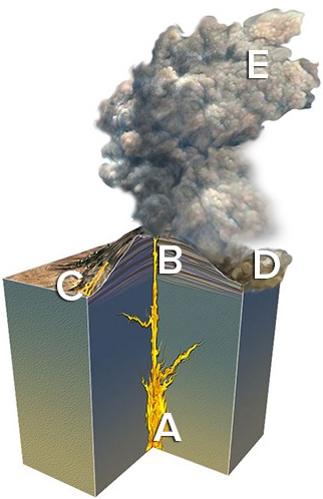The time period between successive new moons is 29.5 days.
Answer the following statement true (T) or false (F)
True
You might also like to view...
On which of the following days at the North Pole will the sun rise above the horizon?
A. June 22 B. December 22 C. March 21 D. September 23
The site on the accompanying figure that would most likely form a rock that has a welded texture is

A) A.
B) B.
C) C.
D) D.
E) E.
Oxygen-18
A) is the more common isotope of oxygen. B) is more prevalent in oceans when glaciers are expanding. C) has not been a useful tool in ice-core analysis. D) is useful to scientists because it emits alpha rays.
What has happened to unemployment rates in central cities since the 1960s?
A) They have risen steadily. B) They have declined steadily. C) They declined in the 1960s, then rose consistently since then. D) They rose steadily in the 1960s, but have declined significantly since that time. E) They have remained steady.